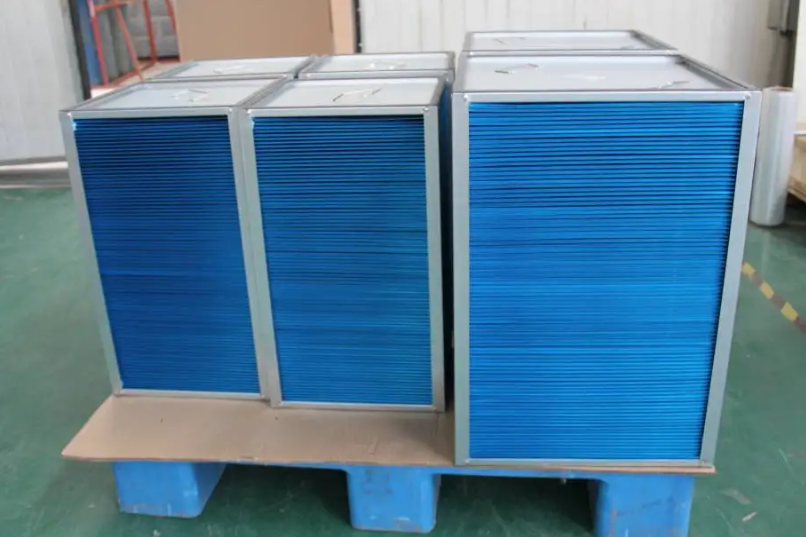
Einleitung: Der Wärmetauscherkern ist ein Kreuzstrom-Wärmetauscherkern, in dem zwei Luftströme mit unterschiedlichen Temperaturen in einem positiven Kreuzstrom fließen und ein Wärmeaustausch zwischen den beiden Flüssigkeiten stattfindet, wobei ihre Kanäle vollständig getrennt sind.
Kreuzstrom-Plattenwärmetauscher können in Lüftungsanlagen als Hauptkomponente der Wärmerückgewinnung eingesetzt werden. Kreuzstrom-Plattenwärmetauscher können auch in Lüftungssystemen eingesetzt werden, indem sie in Luftkanälen als Hauptkomponente der Wärmerückgewinnung installiert werden. Ihre Einbaupositionen können flexibel gewechselt werden.

Anwendungsszenarien: Abwärmerückgewinnungslösungen für Beschichtungsmaschinen, Laminiermaschinen usw., Wärmerückgewinnungslösungen zum Trocknen von Gemüse, Nüssen, Garnelenhaut und Trockenfisch, Abwärmerückgewinnung für Lackierräume, energiesparende Technologien zur Abwärmerückgewinnung von Abgasen wie Kessel- und Fabrikstrom.
Die Modulstruktur kann jede beliebige Größen- und Stapelhöhenkombination bereitstellen, um verschiedenen Luftstrom- und Szenenanwendungen gerecht zu werden.
Material: Je nach den Arbeitsbedingungen vor Ort stehen verschiedene Materialien zur Auswahl, wie z. B. hydrophile Aluminiumfolie, Aluminiumfolie aus Epoxidharz, Edelstahl usw.
